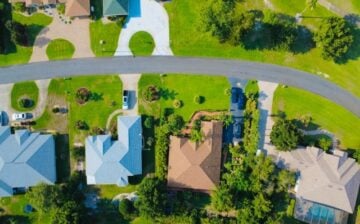Relocating to a new home isn’t just about the house itself. It’s about the neighborhood that surrounds it. From local amenities and safety to schools and commute times, the area you choose can significantly impact your day-to-day life and long-term satisfaction. Whether you’re buying your first home or upgrading to fit a growing family, understanding what to look for in a neighborhood can help you make a decision that feels right today and in the years to come.
If you’re considering a move to southeast Texas, especially near cities like Manvel, you’re in good company. The region has been attracting new homeowners who want both convenience and community. The charm of suburban comfort blended with modern amenities makes this area a smart choice for anyone ready to settle into a home that fits their lifestyle.
Let’s explore what makes a great neighborhood and how to identify one that’s perfect for you.

1.Explore Nearby Housing Opportunities and Community Layout
When searching for your next neighborhood, one of the first things you’ll want to do is understand the types of homes available and how the area is planned. A well-designed community often features a blend of residential zones, shared green spaces, and easy access to main roads and public services.
For instance, if you’re exploring new houses for sale near Manvel, TX, you’ll find options that combine modern layouts with thoughtful neighborhood design. Communities here are often master-planned with walkability in mind and offer lifestyle-focused amenities like parks, trails, and recreation centers. These features can make daily living more convenient and enjoyable while also boosting your home’s long-term value.
Also, consider the type of neighbors you’ll have. Are they mostly families, retirees, or young professionals? The answer might influence how well you fit in, especially if you’re seeking a sense of belonging and shared lifestyle values.
-
Look Into Local Schools and Education Options
Even if you don’t have kids, being in a neighborhood with access to good schools can positively influence property values and community atmosphere. For families, it’s a no-brainer. You want your children to attend quality schools that support both academic and social development.
Research the local school district, nearby elementary and high schools, and any private or charter school alternatives. You can look at test scores, ratings, and even online parent reviews to get a sense of what the educational experience is like in that area.
If you’re moving to a developing community, check what’s planned in terms of new school construction or district expansions. New neighborhoods often attract investments in public infrastructure, and that can include education.
-
Assess Safety and Security
Feeling secure in your neighborhood is essential. Before making a decision, take time to evaluate local crime statistics, which are often available through city or county websites. You might also want to visit at different times of the day, mornings, evenings, and weekends, to get a real feel for the environment.
Talk to residents if possible. Most are more than willing to share their thoughts about what it’s like to live there day-to-day. A community with neighborhood watch programs or active online groups often indicates a proactive approach to maintaining safety.
Also, look around for signs of property upkeep. Well-maintained lawns, clean streets, and a general sense of order often reflect pride of ownership and community engagement, two factors that correlate strongly with neighborhood safety.
-
Measure Commute and Access to Essentials
How far are you from work, schools, hospitals, grocery stores, and recreational spots? Your commute might not be the most exciting part of your day, but it’s certainly one of the most consistent. Living near major highways or having access to public transportation can reduce stress and save money over time.
Check out travel times during peak hours using map apps. Think about how many errands can be run within a five- to ten-minute drive or walk. Some neighborhoods in growing suburban areas, like those around Manvel, are intentionally located to offer easy access to both nature and city life, giving you the best of both worlds.
-
Consider Lifestyle Amenities
Your home should support how you want to live. If you’re active, parks and walking trails might be important. If you enjoy community events, look for areas that regularly host farmers markets, outdoor concerts, or neighborhood get-togethers. Access to quality dining, fitness centers, and entertainment adds to the richness of your daily experience.
Newer communities often build these lifestyle perks into their design. It’s not just about a nice house—it’s about creating a full environment that encourages connection and wellbeing. For families, playgrounds, splash pads, and community pools can turn weekends into staycations.
-
Look Ahead: Future Growth and Development
Even if a neighborhood feels perfect today, it’s wise to consider where it’s headed. Is the area growing in a way that supports property values? Are there future infrastructure or retail developments in the works? Growth can bring convenience and job opportunities, but unchecked development might also lead to overcrowding or traffic congestion.
Check city planning documents, attend community forums if available, or talk to your realtor about long-term expectations for the neighborhood. Local government websites often publish upcoming zoning changes, road expansions, and public initiatives that can give you a good sense of what’s ahead.
-
Test the Vibe: Visit and Visualize
Pictures and listings only tell part of the story. There’s no substitute for experiencing the neighborhood yourself. Take a walk, sit in a nearby coffee shop, or spend time at a park. Notice the pace of life, the noise level, and the general mood of the community.
If possible, attend an open house or tour a few homes in the area. These visits give you a chance to imagine what daily life might feel like. Can you see yourself jogging in the morning here? Walking your dog in the evening? Chatting with neighbors on the weekend?
That gut feeling is an important part of the process. Don’t ignore it.
Choosing the right neighborhood involves a mix of practical research and personal instinct. From school quality and home design to commute times and future growth, every detail contributes to how well you’ll thrive in your next home.
If you’re considering southeast Texas, communities near Manvel are especially appealing for buyers looking to blend comfort, affordability, and a sense of connection. When you explore neighborhoods with that mindset, you’re not just choosing a location. You’re building a lifestyle.
By doing your homework, asking the right questions, and taking your time, you’ll be ready to make a confident, informed choice about your next neighborhood, one that feels like home the moment you move in.
We hope you found this blog post on What to Look for When Choosing Your Next Neighborhood, useful. Be sure to check out our post on Meeting People in Your Neighborhood for more great tips!
Have Experience in the Moving Industry? Want an Additional Income Stream? Work With All Around Moving!
All Around Moving’s Work With Us program provides experienced moving consultants with the opportunity to run their own Relocation Consultant business from anywhere in the USA.
A nominal one-time start up fee gives you initial-customer-leads to get your business up and running. There are no recurring expenses, except purchasing your own leads. We share profits 50%-50% with you from all jobs you booked with us. Click here to learn more.
We’re now accepting guest articles on our moving blog. Real estate agencies and brokers are encouraged to share strategies for selling residential real estate or leasing commercial properties.





